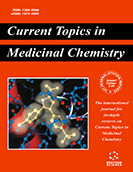Abstract
Background: Pseudomonas aeruginosa is a gram-negative pathogen, associated with a severe mortality rate. It is also difficult to treat due to numerous resistance mechanisms to a wide range of antibiotics.
Objective: Evaluate the activity of pexiganan, an antimicrobial peptide, in combination with two clinical antibiotics (azithromycin and tigecycline) that are not active against P. aeruginosa.
Methods: Ten clinical P. aeruginosa were isolated from urinary tract infections, blood culture, skin infections and respiratory tract infections. Minimum inhibitory concentrations (MICs) and synergies were evaluated by broth microdilution, checkerboard assays and time-kill studies. In vitro synergy was confirmed with an in vivo experiment using a murine model of sepsis.
Results: Pexiganan MICs were included between 2 and 16 mg/L. Tigecycline and azithromycin MICs were high as expected (4-64 mg/L and 32-256 mg/L, respectively). Pexiganan and azithromycin combination resulted to be additive or indifferent while tigecycline and pexiganan combination was synergic against seven out of ten P. aeruginosa and additive against the other strains. In vivo experiment confirmed the in vitro synergy, denoting a significative reduction of bacteria in mice treated with pexiganan and tigecycline combination.
Conclusion: Antimicrobial peptides are molecules that could be useful in the fight against infections and pexiganan seems to be one of the most promising. Our results demonstrated that, in association with tigecycline, pexiganan administration could overcome antibiotic resistance and increase the effectiveness of treatment against P. aeruginosa sepsis.
Keywords: Pseudomonas aeruginosa, Pexiganan, Tigecycline, Azithromycin, Antibiotic combinations, Murine sepsis model.
Graphical Abstract
Current Topics in Medicinal Chemistry
Title:Efficacy of Pexiganan Combination with Tigecycline in a Mouse Model of Pseudomonas aeruginosa Sepsis
Volume: 18 Issue: 24
Author(s): Oscar Cirioni*, Oriana Simonetti*, Gianluca Morroni, Lucia Brescini, Wojciech Kamysz, Elzbieta Kamysz, Fiorenza Orlando, Elisa Pierpaoli, Miriam Caffarini, Monia Orciani, Claudio Agostinelli, Annamaria Offidani, Mauro Provinciali and Andrea Giacometti
Affiliation:
- Clinic of Infectious Diseases, Dept. of Biomedical Sciences and Public Health, Polytechnic University of Marche, Ancona,Italy
- Clinic of Dermatology, Department of Clinical and Molecular Sciences, Polytechnic University of Marche, Ancona,Italy
Keywords: Pseudomonas aeruginosa, Pexiganan, Tigecycline, Azithromycin, Antibiotic combinations, Murine sepsis model.
Abstract: Background: Pseudomonas aeruginosa is a gram-negative pathogen, associated with a severe mortality rate. It is also difficult to treat due to numerous resistance mechanisms to a wide range of antibiotics.
Objective: Evaluate the activity of pexiganan, an antimicrobial peptide, in combination with two clinical antibiotics (azithromycin and tigecycline) that are not active against P. aeruginosa.
Methods: Ten clinical P. aeruginosa were isolated from urinary tract infections, blood culture, skin infections and respiratory tract infections. Minimum inhibitory concentrations (MICs) and synergies were evaluated by broth microdilution, checkerboard assays and time-kill studies. In vitro synergy was confirmed with an in vivo experiment using a murine model of sepsis.
Results: Pexiganan MICs were included between 2 and 16 mg/L. Tigecycline and azithromycin MICs were high as expected (4-64 mg/L and 32-256 mg/L, respectively). Pexiganan and azithromycin combination resulted to be additive or indifferent while tigecycline and pexiganan combination was synergic against seven out of ten P. aeruginosa and additive against the other strains. In vivo experiment confirmed the in vitro synergy, denoting a significative reduction of bacteria in mice treated with pexiganan and tigecycline combination.
Conclusion: Antimicrobial peptides are molecules that could be useful in the fight against infections and pexiganan seems to be one of the most promising. Our results demonstrated that, in association with tigecycline, pexiganan administration could overcome antibiotic resistance and increase the effectiveness of treatment against P. aeruginosa sepsis.
Export Options
About this article
Cite this article as:
Cirioni Oscar *, Simonetti Oriana *, Morroni Gianluca , Brescini Lucia , Kamysz Wojciech , Kamysz Elzbieta, Orlando Fiorenza , Pierpaoli Elisa , Caffarini Miriam , Orciani Monia , Agostinelli Claudio , Offidani Annamaria , Provinciali Mauro and Giacometti Andrea , Efficacy of Pexiganan Combination with Tigecycline in a Mouse Model of Pseudomonas aeruginosa Sepsis, Current Topics in Medicinal Chemistry 2018; 18 (24) . https://dx.doi.org/10.2174/1568026619666181219123431
| DOI https://dx.doi.org/10.2174/1568026619666181219123431 |
Print ISSN 1568-0266 |
| Publisher Name Bentham Science Publisher |
Online ISSN 1873-4294 |
 44
44 4
4 1
1
- Author Guidelines
- Bentham Author Support Services (BASS)
- Graphical Abstracts
- Fabricating and Stating False Information
- Research Misconduct
- Post Publication Discussions and Corrections
- Publishing Ethics and Rectitude
- Increase Visibility of Your Article
- Archiving Policies
- Peer Review Workflow
- Order Your Article Before Print
- Promote Your Article
- Manuscript Transfer Facility
- Editorial Policies
- Allegations from Whistleblowers
- Announcements


























